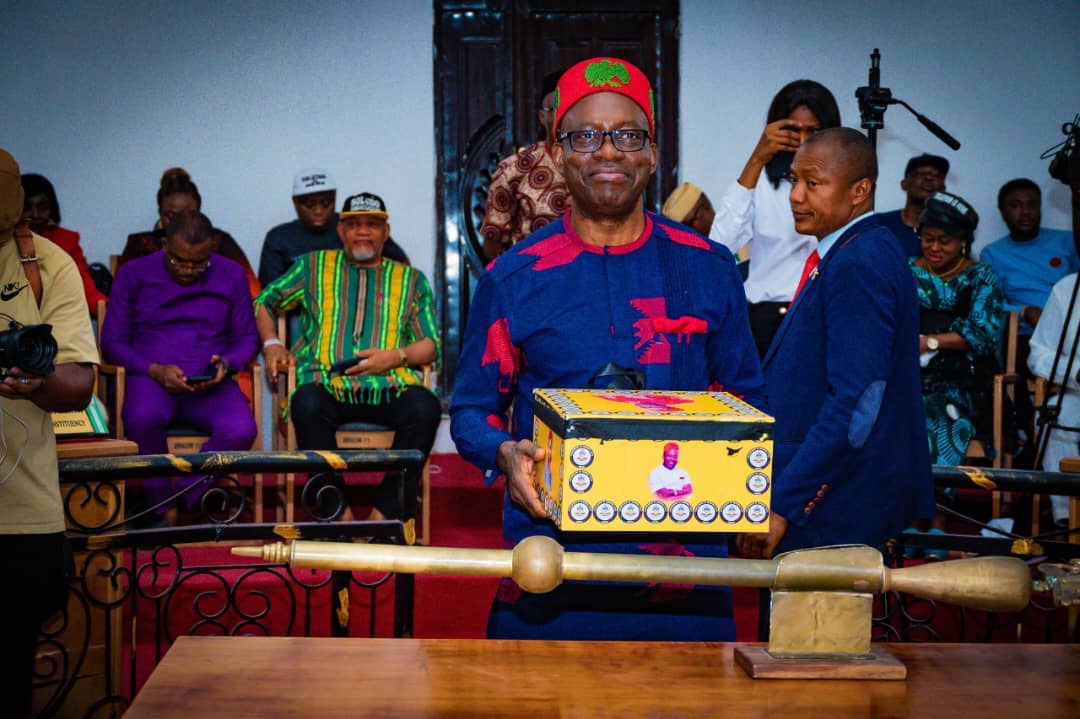In an era where Nigerian states often retreat behind the shield of “economic headwinds,” Anambra State is charting a remarkably different course. This is evident in Governor Chukwuma Soludo’s presentation of the N607 billion 2025 budget. Aptly tagged “Changing Gears 2.0”, the budget tells a compelling story of fiscal ingenuity, one where ambitious development meets pragmatic restraint.
The numbers are striking, not for their size, but for their context. At $357 million, this budget is actually smaller in real terms than what the state spent in 2008 ($517 million) or 2013 ($1.1 billion). Yet, paradoxically, it promises to deliver even more. This is not just political rhetoric; it is backed by a clear track record of execution.
Consider the mathematics of adversity: cement prices have more than tripled to N10,000 per bag, fuel costs have skyrocketed tenfold to over N1,000 per litre, and inflation continues its relentless march. Lesser administrations might have used these as ready-made excuses. Instead, Governor Soludo’s team has transformed these constraints into a catalyst for innovation.
Instructively, the budget’s architecture reveals a government that understands the art of prioritisation. A 77:23 ratio of capital to recurrent expenditure is beyond just a number; it is a significant shift in state-level governance. Most Nigerian states struggle to keep their recurrent expenditure below 70%. By driving it down to 23%, Anambra State under the leadership of Governor Soludo is effectively saying: we will run a lean government to build a rich state.
But perhaps the most intriguing aspect of this budget is its candid honesty about weaknesses. The state’s IGR currently stands at N2.5 billion monthly, against a potential of N10-15 billion. This admission is not just all about transparency; it is also a challenge to the status quo. It suggests a government willing to confront its shortcomings rather than hide them.
What’s more, the execution strategy reads like a business plan rather than a typical government document. From transforming 22 schools into “smart schools” to distributing millions of economic seedlings and trees, from building the “largest shopping mall in Africa” to creating three new cities, the ambition is breathtaking. Yet it is tempered with fiscal responsibility: the administration won’t borrow unless the loans are concessionary and tied to self-liquidating projects.
What is particularly noteworthy is the state’s approach to human capital development. The extension of free education through SS3, recruitment of 8,115 teachers, and the innovative “One Youth, Two Skills” programme suggest a government thinking beyond the next election. This is governance with a generational perspective.
However, the true genius of this budget lies not in what it promises to spend, but in how it plans to achieve more with less. The emphasis on strategic partnerships, community involvement, and private sector engagement suggests a recognition that the government alone cannot drive development.
Critics might argue that the budget’s ambitions exceed its means. But therein lies its brilliance: by setting ambitious targets while maintaining fiscal discipline, it creates a productive tension between aspiration and reality. This tension, if properly managed, could be the catalyst for innovation in governance.
As Nigeria contends with the aftermath of fuel subsidy removal and currency unification, Anambra’s approach offers a template for other states. It demonstrates that the answer to economic challenges is not always more money; sometimes, it is smarter money.
Now, the success of this budget will ultimately depend on execution. But by maintaining a capital-heavy investment profile while keeping recurrent costs low, prioritising revenue generation while resisting reckless borrowing, and balancing ambitious development with fiscal restraint, Governor Soludo is showing that it is possible to dream big while spending smart.
In the end, this “Changing Gears 2.0” budget is more than another routine financial document replete with platitudes. It is a masterclass in governance under constraint, audaciously extending the mantra of Doing More with Less and representing another major step towards realising Governor Soludo’s vision of transforming Anambra into a smart, livable and prosperous mega city.
.




